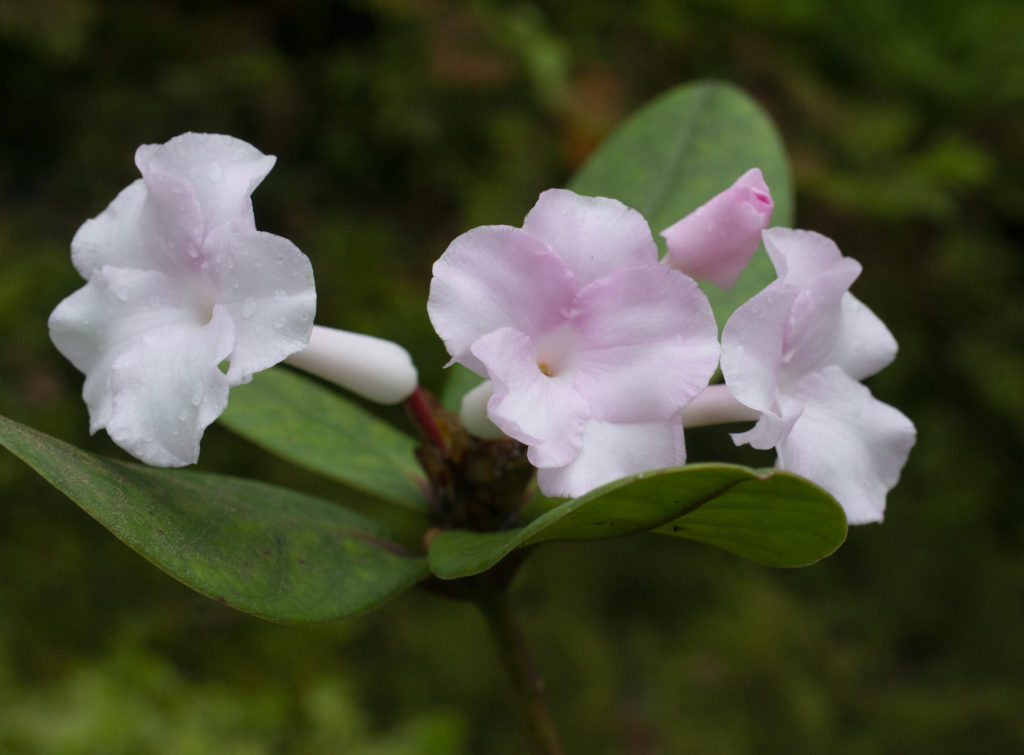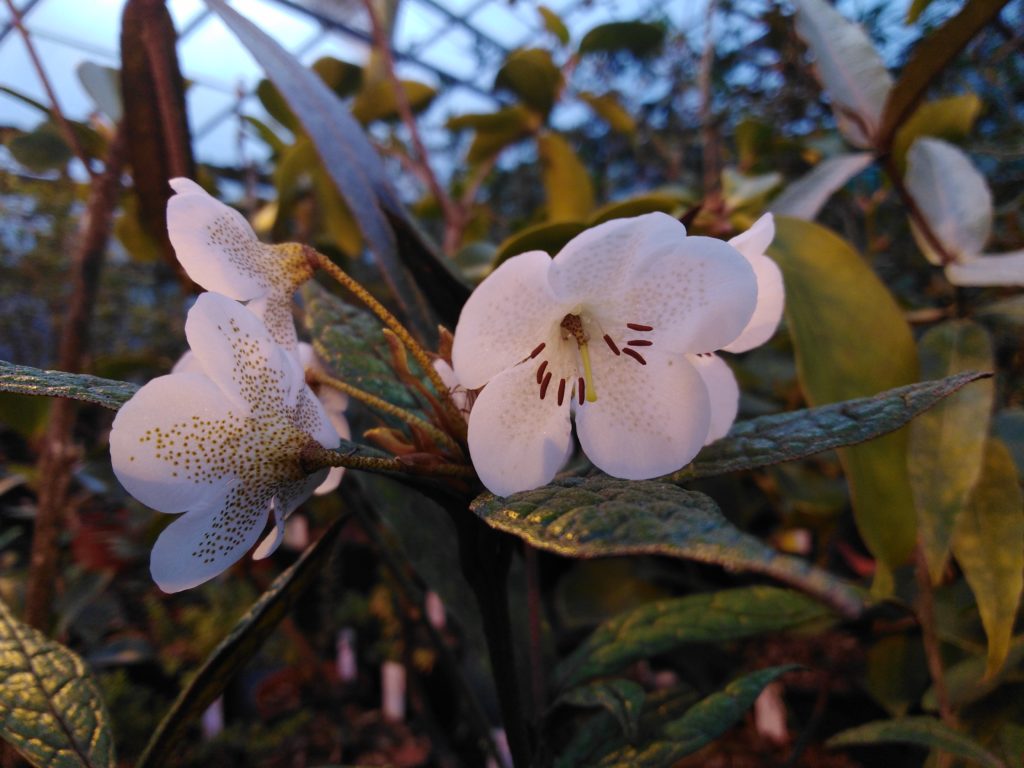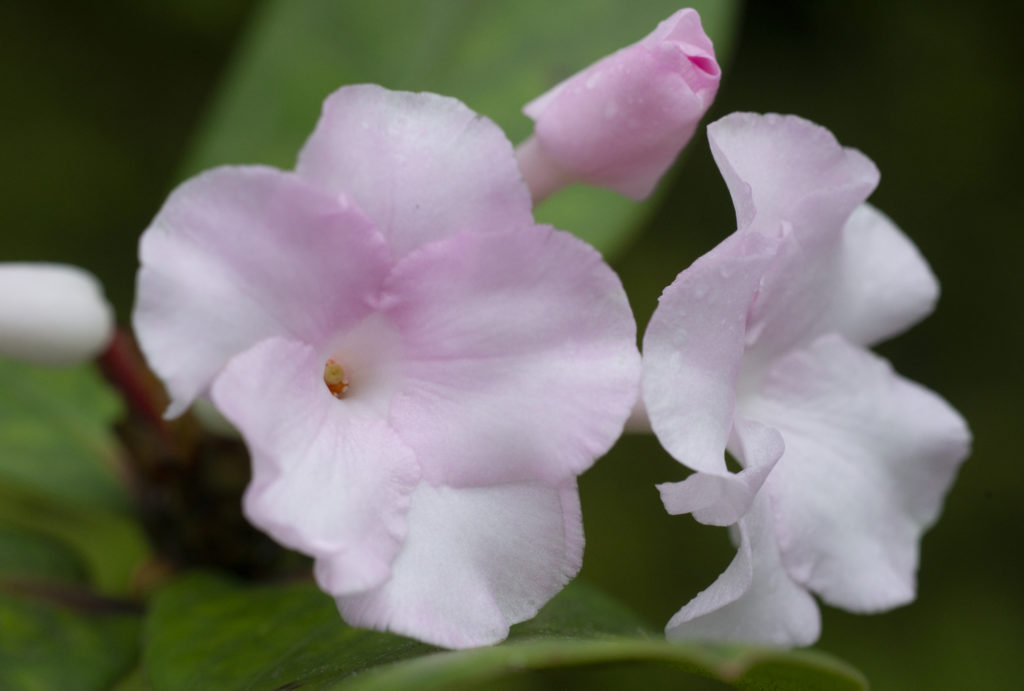
Accession Number:20110220*A
Photo: Lynsey Wilson.
Rhododendron mogeanum has flowered in the Vireya research collection at Royal Botanic Garden Edinburgh for what we think is the first time in cultivation.
In 2011 an expedition from RBGE, led by George Argent, with Tony Conlon and Nicky Sharp from Edinburgh and local counterparts from Cibodas Botanic Garden, went to Bukit Raya, Kalimantan in Indonesian Borneo with the purpose to study and collect poorly known Rhododendron species. The two target species for the expedition were Rhododendron fortunans and Rhododendron mogeanum which are both endemic to the mountain.

Accession Number: 20110234*A
Photo Alan Elliott
Rhododendron mogeanum had been described as a new species to science in 2003 by George from a single preserved herbarium collection made by Dr Joannes Mogea, the former curator of Herbarium Bogoriense.

Accession Number:20110220*A .
Photo: Lynsey Wilson.
It took the team nearly 20 days of navigating rivers, roads, forest trails and complicated bureaucracy before they found their two target species near the summit of the Mount Raya. Neither species were in fruit and only one plant of Rhododendron fortunans was found in flower, so cutting material was taken from both in the hope they would survive the trip back to Scotland.
It has taken more than 8 years for the plant George believed and hoped to be Rhododendron mogeanum to flower and have its identity confirmed. Unfortunately, as many folk will know, George passed away in April 2019 and so despite naming this species he never got to see this bonny Rhododendron in flower.

William Campbell
Hi Alan
Is the vireya collection open to the public, never sure now. Have views in ths past with George at a rhododendron conference.
However my wife has not seen the collection, she has an interest in the vireya group of plants.
Regards
Willie Campbell